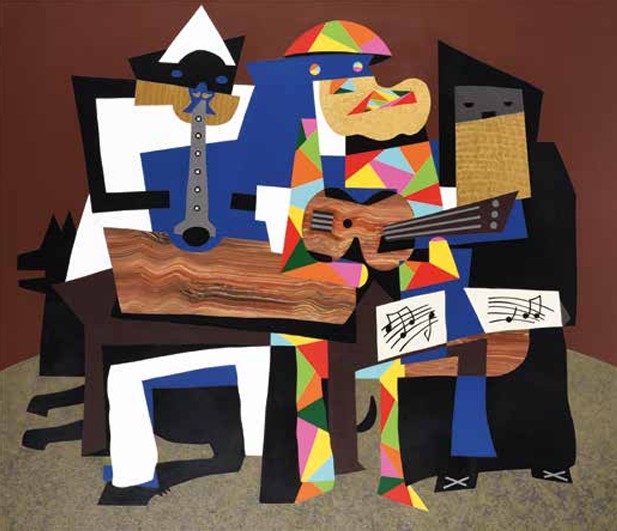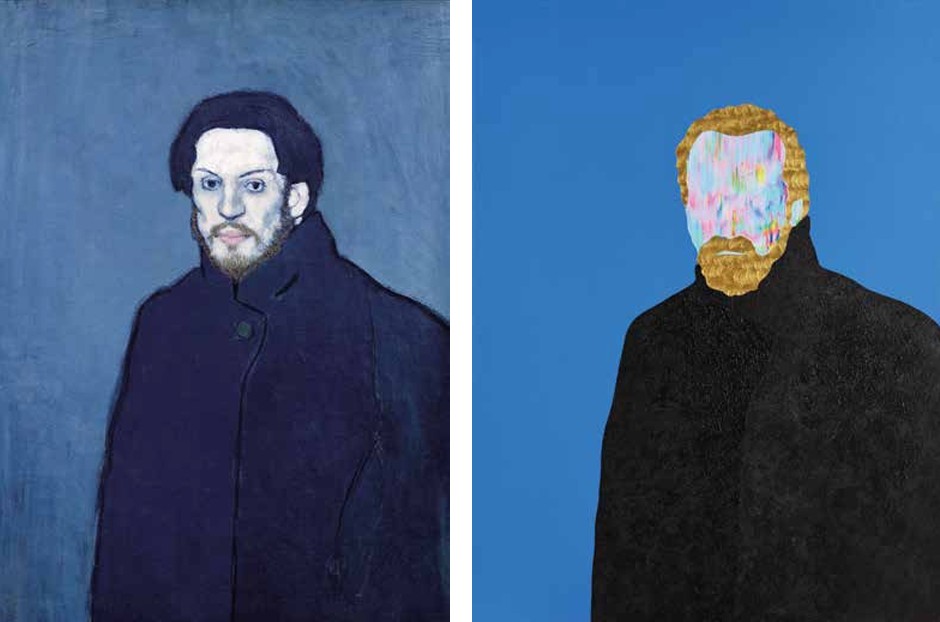
Art Historical & Critical Analysis: Picasso’s Influence on Pedro Paricio
Pedro Paricio’s body of work is both a visual and philosophical dialogue with art history, and no artist appears to cast a longer shadow over his oeuvre than Pablo Picasso. While this influence is briefly acknowledged in the original text through the 2019 exhibition Paricio·Picasso, a deeper analysis reveals that Picasso’s legacy permeates Paricio’s approach to form, subject matter, identity, and the conceptual nature of painting itself.
1. Formal and Stylistic Parallels
Like Picasso, Paricio oscillates between abstraction and figuration, often within the same composition. This mirrors Picasso’s own career trajectory—from Blue Period realism, through Cubism, to later expressionist and neoclassical phases. Paricio’s use of bold, flat color fields, fragmented anatomy, and geometric composition particularly recalls Analytical Cubism and Synthetic Cubism, but he renders these with a 21st-century vibrancy and digital-era clarity.
Moreover, his juxtaposition of flat hard-edged shapes with painterly textures in early works like Digital Painting and After Francis Bacon echoes Picasso’s constant challenge to the picture plane—reaffirming that a painting is not merely an illusion of the world, but a world unto itself.
2. The Mask and Identity
Paricio’s recurring theme of the mask, disguise, and transformation—especially visible in works from Shaman and The Theatre of Painting—also resonates deeply with Picasso’s interest in African tribal art and Iberian sculpture, which famously shaped his proto-Cubist and Cubist explorations. Picasso viewed masks not as objects of concealment, but as tools of revelation, a belief Paricio inherits in his attempt to express the multiplicity of self and perception.

Pedro Paricio‘s Reinterpretation of Picasso’s work is in Homage to him.
3. Philosophy of Painting
Paricio’s statement that “a work of art is not only today, but also simultaneously yesterday and tomorrow” could have been said by Picasso himself. Both artists view painting not merely as an expressive medium but as a philosophical practice that collapses time and tradition. For Paricio, like Picasso, painting is an arena for intellectual combat, a theatre where the ghosts of the past meet the anxieties of the present.
4. Homage as Reinvention
In the 2019 Paricio·Picasso exhibition, Paricio does not imitate Picasso but channels his spirit—engaging in a kind of visual call-and-response. The act of homage becomes an act of reconstruction, not replication. Paricio abstracts the essence of Picasso’s portraits, dismembers their formal logic, and reconstructs them with his own iconographic vocabulary—adding visual humor, street-art edge, and digital-era symbolism.
This is reminiscent of how Picasso himself reinterpreted artists like Velázquez in Las Meninas, Goya in The Third of May, and Delacroix in Women of Algiers. In both cases, we see artists engaging in a dialogue across centuries, asserting the perpetual relevance of the painter’s voice.
Summary Picasso’s Influence
Paricio’s engagement with Picasso is more than homage; it is a philosophical and visual lineage. In his reinterpretations of Picasso’s portraits and structural compositions, Paricio asserts himself as both heir and innovator—extending the language of modernism into the 21st century with renewed energy and insight.
A defining influence on Paricio’s development is Pablo Picasso—whose legacy is not only commemorated in Paricio’s 2019 exhibition Paricio·Picasso but suffuses the very language of his art. Like Picasso, Paricio blurs the lines between abstraction and figuration, drawing upon Cubist principles of fragmentation, geometric form, and conceptual multiplicity.
Much like Picasso’s lifelong engagement with the canon—from African sculpture to Old Masters—Paricio sees art history as a living continuum, ripe for reinterpretation. His paintings are rich in allusion, yet unapologetically contemporary in style and sensibility. Thematically, both artists explore identity through the mask, the body, and the mythic, embracing the transformational power of art to reveal inner truths.

